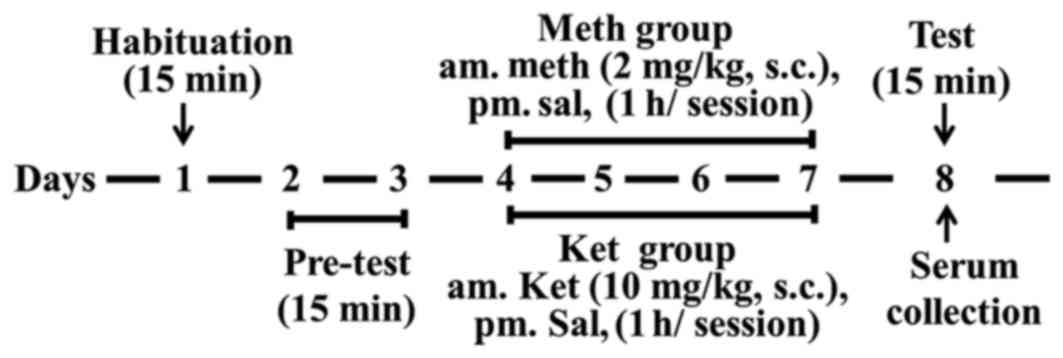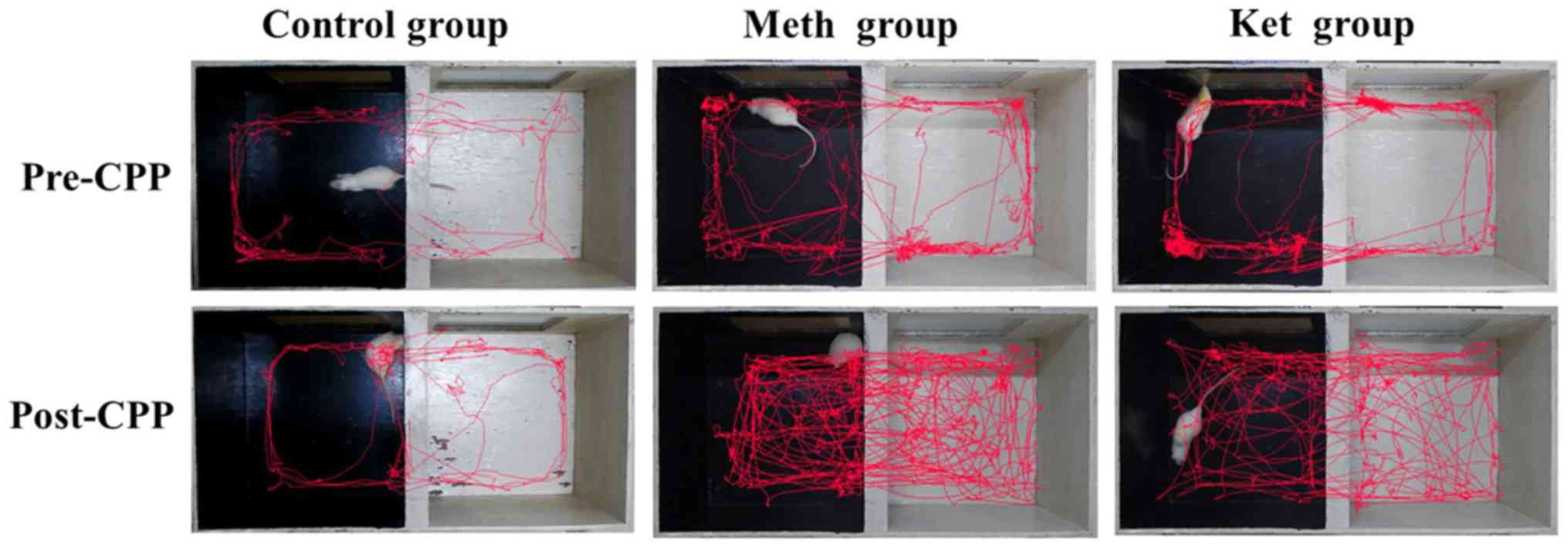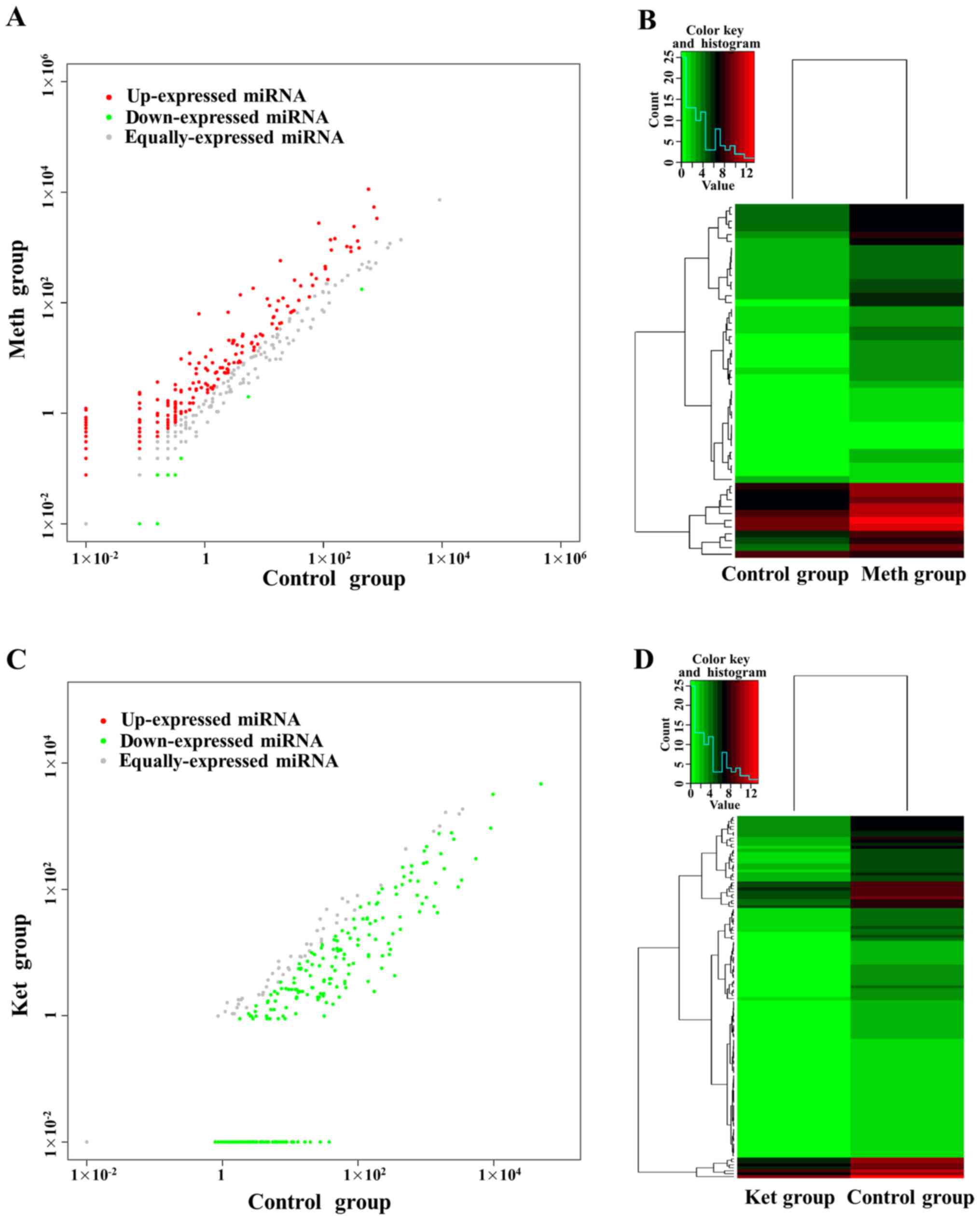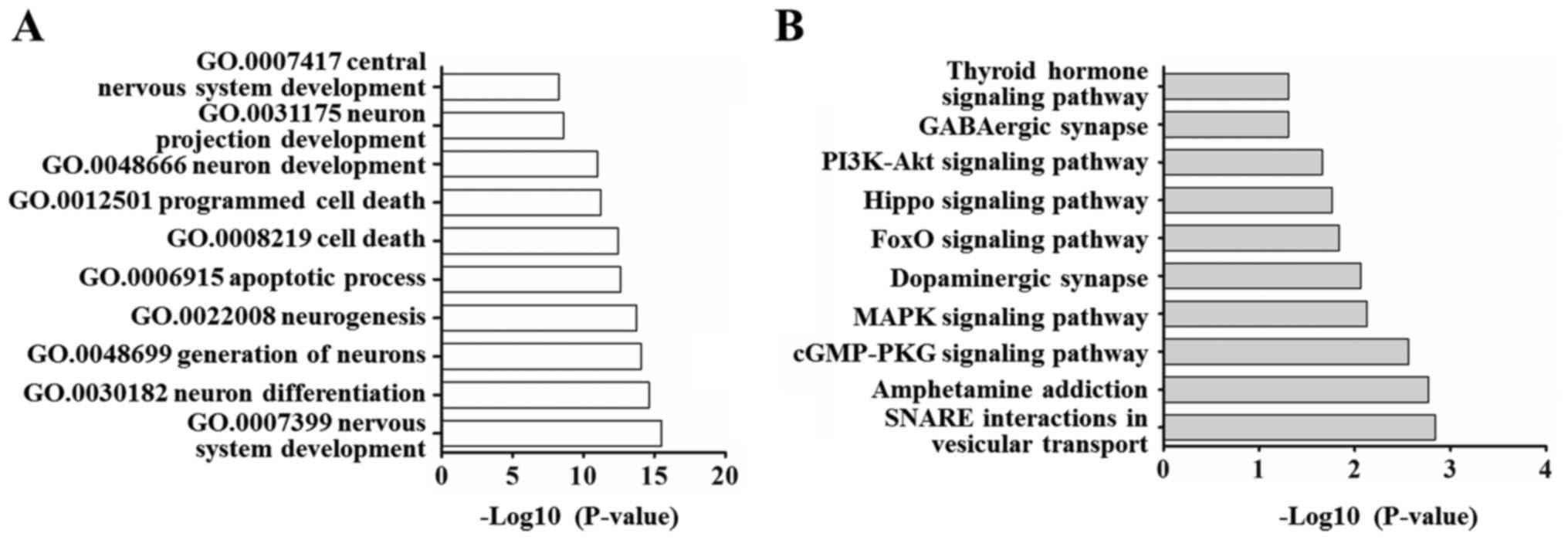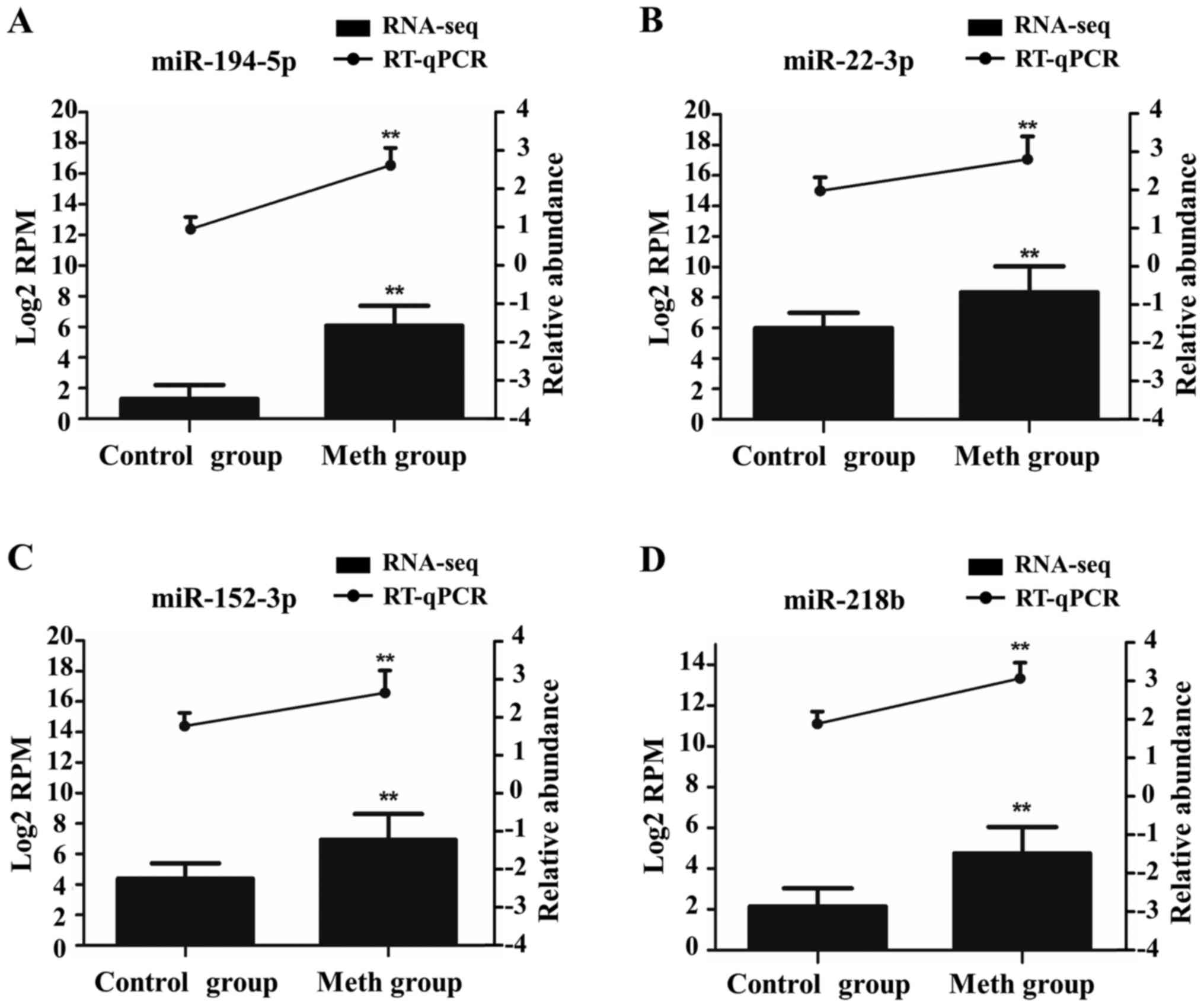|
1
|
Tomás-Rosselló J, Rawson RA, Zarza MJ,
Bellows A, Busse A, Saenz E, Freese T, Shawkey M, Carise D, Ali R
and Ling W: United nations office on drugs and crime international
network of drug dependence treatment and rehabilitation resource
centres: Treatnet. Subst Abus. 31:251–263. 2010. View Article : Google Scholar : PubMed/NCBI
|
|
2
|
Vinogradova MV, Kryukova EM, Kulyamina OS,
Vapnyarskaya OI and Sokolova AP: Approaches to the study of the
status and trends of drug abuse, rehabilitation and reintegration
of drug users. Biosci Biotechnol Res Asia. 11:1505–1514. 2014.
View Article : Google Scholar
|
|
3
|
Baptista S, Lourenço J, Milhazes N, Borges
F, Silva AP and Bacci A: Long-term treatment with low doses of
methamphetamine promotes neuronal differentiation and strengthens
long-term potentiation of glutamatergic synapses onto dentate
granule neurons. eNeuro. 3:pii: ENEURO2016. View Article : Google Scholar
|
|
4
|
Stoicea N, Versteeg G, Florescu D, Joseph
N, Fiorda-Diaz J, Navarrete V and Bergese SD: Ketamine-based
anesthetic protocols and evoked potential monitoring: A
risk/benefit overview. Front Neurosci. 10:372016. View Article : Google Scholar : PubMed/NCBI
|
|
5
|
Tzschentke TM: Measuring reward with the
conditioned place preference (CPP) paradigm: Update of the last
decade. Addict Biol. 12:227–462. 2007. View Article : Google Scholar : PubMed/NCBI
|
|
6
|
Tzschentke TM: Measuring reward with the
conditioned place preference paradigm: A comprehensive review of
drug effects, recent progress and new issues. Prog Neurobiol.
56:613–672. 1998. View Article : Google Scholar : PubMed/NCBI
|
|
7
|
Sun W: Dopamine neurons in the ventral
tegmental area: Drug-induced synaptic plasticity and its role in
relapse to drug-seeking behavior. Curr Drug Abuse Rev. 4:270–285.
2011. View Article : Google Scholar : PubMed/NCBI
|
|
8
|
Hollander JA, Im HI, Amelio AL, Kocerha J,
Bali P, Lu Q, Willoughby D, Wahlestedt C, Conkright MD and Kenny
PJ: Striatal microRNA controls cocaine intake through CREB
signalling. Nature. 466:197–202. 2010. View Article : Google Scholar : PubMed/NCBI
|
|
9
|
Maccani MA, Avissar-Whiting M, Banister
CE, McGonnigal B, Padbury JF and Marsit CJ: Maternal cigarette
smoking during pregnancy is associated with downregulation of
mir-16, mir-21, and mir-146a in the placenta. Epigenetics.
5:583–589. 2010. View Article : Google Scholar : PubMed/NCBI
|
|
10
|
Zheng H, Zeng Y, Zhang X, Chu J, Loh HH
and Law PY: mu-Opioid receptor agonists differentially regulate the
expression of miR-190 and NeuroD. Mol Pharmacol. 77:102–109. 2010.
View Article : Google Scholar : PubMed/NCBI
|
|
11
|
Baek MN, Jung KH, Halder D, Choi MR, Lee
BH, Lee BC, Jung MH, Choi IG, Chung MK, Oh DY and Chai YG:
Artificial microRNA-based neurokinin-1 receptor gene silencing
reduces alcohol consumption in mice. Neurosci Lett. 475:124–128.
2010. View Article : Google Scholar : PubMed/NCBI
|
|
12
|
Emmanouilidou E, Melachroinou K,
Roumeliotis T, Garbis SD, Ntzouni M, Margaritis LH, Stefanis L and
Vekrellis K: Cell-produced alpha-synuclein is secreted in a
calcium-dependent manner by exosomes and impacts neuronal survival.
J Neurosci. 30:6838–6851. 2010. View Article : Google Scholar : PubMed/NCBI
|
|
13
|
Simons M and Raposo G: Exosomes-vesicular
carriers for intercellular communication. Curr Opin Cell Biol.
21:575–581. 2009. View Article : Google Scholar : PubMed/NCBI
|
|
14
|
Lai R, Yeo R, Tan S, Zhang B, Yin Y, Sze
N, Choo A and Lim S: Biochemical potential of MSC exosome.
Cytotherap. 16:S432014. View Article : Google Scholar
|
|
15
|
Sahoo S, Klychko E, Thorne T, Misener S,
Schultz KM, Millay M, Ito A, Liu T, Kamide C, Agrawal H, et al:
Exosomes from human CD34(+) stem cells mediate their proangiogenic
paracrine activity. Circ Res. 109:724–728. 2011. View Article : Google Scholar : PubMed/NCBI
|
|
16
|
Wang HW, Wang J, Ding F, Callahan K,
Bratkowski MA, Butler JS, Nogales E and Ke A: Architecture of the
yeast Rrp44 exosome complex suggests routes of RNA recruitment for
3′ end processing. Proc Natl Acad Sci USA. 104:pp. 16844–16849.
2007; View Article : Google Scholar : PubMed/NCBI
|
|
17
|
Liu W, Peng QX, Lin XL, Luo CH, Jiang MJ,
Mo ZX and Yung KK: Effect of rhynchophylline on the expression of
p-CREB and sc-Fos in triatum and hippocampal CA1 area of
methamphetamine-induced conditioned place preference rats.
Fitoterapia. 92:16–22. 2014. View Article : Google Scholar : PubMed/NCBI
|
|
18
|
Li J, Liu W, Peng Q, Jiang M, Luo C, Guo
Y, Liu Y, Fang M and Mo Z: Effect of rhynchophylline on conditioned
place preference on expression of NR2B in methamphetamine-dependent
mice. Biochem Biophys Res Commun. 452:695–700. 2014. View Article : Google Scholar : PubMed/NCBI
|
|
19
|
Robinson MD, McCarthy DJ and Smyth GK:
EdgeR: A bioconductor package for differential expression analysis
of digital gene expression data. Bioinformatics. 26:139–140. 2010.
View Article : Google Scholar : PubMed/NCBI
|
|
20
|
Manzanedo C, Aguilar MA, Rodriguez-Arias M
and Miñarro J: Conditioned place preference paradigm can be a mouse
model of relapse to opiates. Neurosci Res Commun. 28:23–29. 2001.
View Article : Google Scholar
|
|
21
|
Van den Oever MC, Spijker S and Smit AB:
The synaptic pathology of drug addiction. Adv Exp Med Biol.
970:469–491. 2012. View Article : Google Scholar : PubMed/NCBI
|
|
22
|
Gonda DD, Akers JC, Kim R, Kalkanis SN,
Hochberg FH, Chen CC and Carter BS: Neuro-oncologic applications of
exosomes, microvesicles, and other nano-sized extracellular
particles. Neurosurgery. 72:501–510. 2013. View Article : Google Scholar : PubMed/NCBI
|
|
23
|
Yang MH, Jung MS, Lee MJ, Yoo KH, Yook YJ,
Park EY, Choi SH, Suh YJ, Kim KW and Park JH: Gene expression
profiling of the rewarding effect caused by methamphetamine in the
mesolimbic dopamine system. Mol Cells. 26:121–130. 2008.PubMed/NCBI
|
|
24
|
During MJ, Bean AJ and Roth RH: Effects of
CNS stimulants on the in vivo release of the colocalized
transmitters, dopamine and neurotensin, from rat prefrontal cortex.
Neurosci Lett. 140:129–133. 1992. View Article : Google Scholar : PubMed/NCBI
|
|
25
|
Vaz GC, Bahia AP, de Figueiredo
Müller-Ribeiro FC, Xavier CH, Patel KP, Santos RA, Moreira FA,
Frézard F and Fontes MA: Cardiovascular and behavioral effects
produced by administration of liposome-entrapped GABA into the rat
central nervous system. Neuroscience. 285:60–69. 2015. View Article : Google Scholar : PubMed/NCBI
|
|
26
|
Nugent FS: VTA GABAergic plasticity: An
inhibitory synaptic model of drug addiction. Springer; New York,
NY: 2011
|
|
27
|
Borner GH, Antrobus R, Hirst J, Bhumbra
GS, Kozik P, Jackson LP, Sahlender DA and Robinson MS: Multivariate
proteomic profiling identifies novel accessory proteins of coated
vesicles. J Cell Biol. 197:141–160. 2012. View Article : Google Scholar : PubMed/NCBI
|
|
28
|
Bauer MC, O'Connell DJ, Maj M, Wagner L,
Cahill DJ and Linse S: Identification of a high-affinity network of
secretagogin-binding proteins involved in vesicle secretion. Mol
Biosyst. 7:2196–2204. 2011. View Article : Google Scholar : PubMed/NCBI
|
|
29
|
Byrne FL, Poon IK, Modesitt SC, Tomsig JL,
Chow JD, Healy ME, Baker WD, Atkins KA, Lancaster JM, Marchion DC,
et al: Metabolic vulnerabilities in endometrial cancer. Cancer Res.
74:5832–5845. 2014. View Article : Google Scholar : PubMed/NCBI
|
|
30
|
Surhone LM, Tennoe MT and Henssonow SF:
Tnfrsf1b. Betascript Publishing; 2011
|
|
31
|
Pati D, Zhang N and Plon SE: Linking
sister chromatid cohesion and apoptosis: Role of Rad21. Mol Cell
Biol. 22:8267–8277. 2002. View Article : Google Scholar : PubMed/NCBI
|



